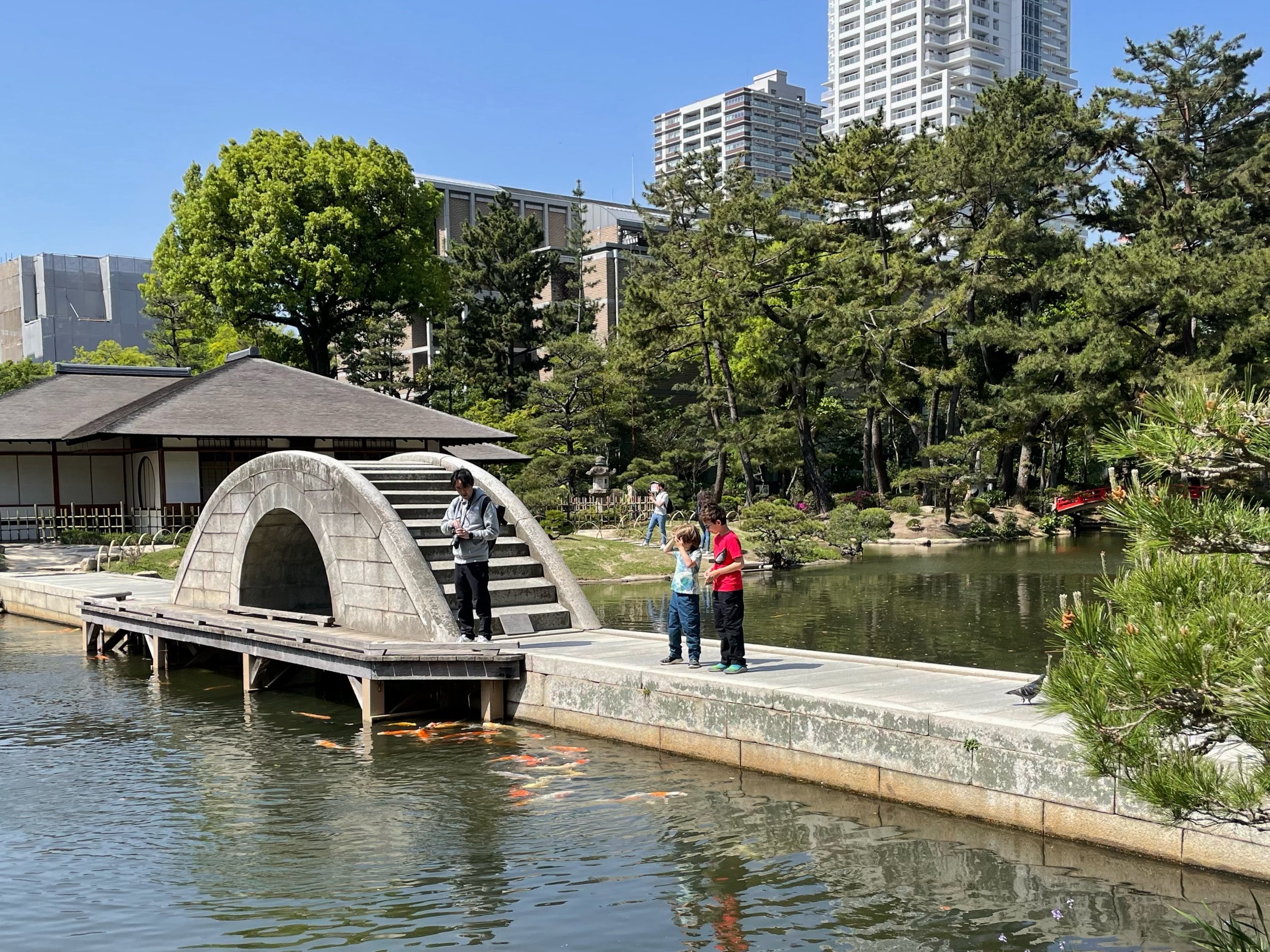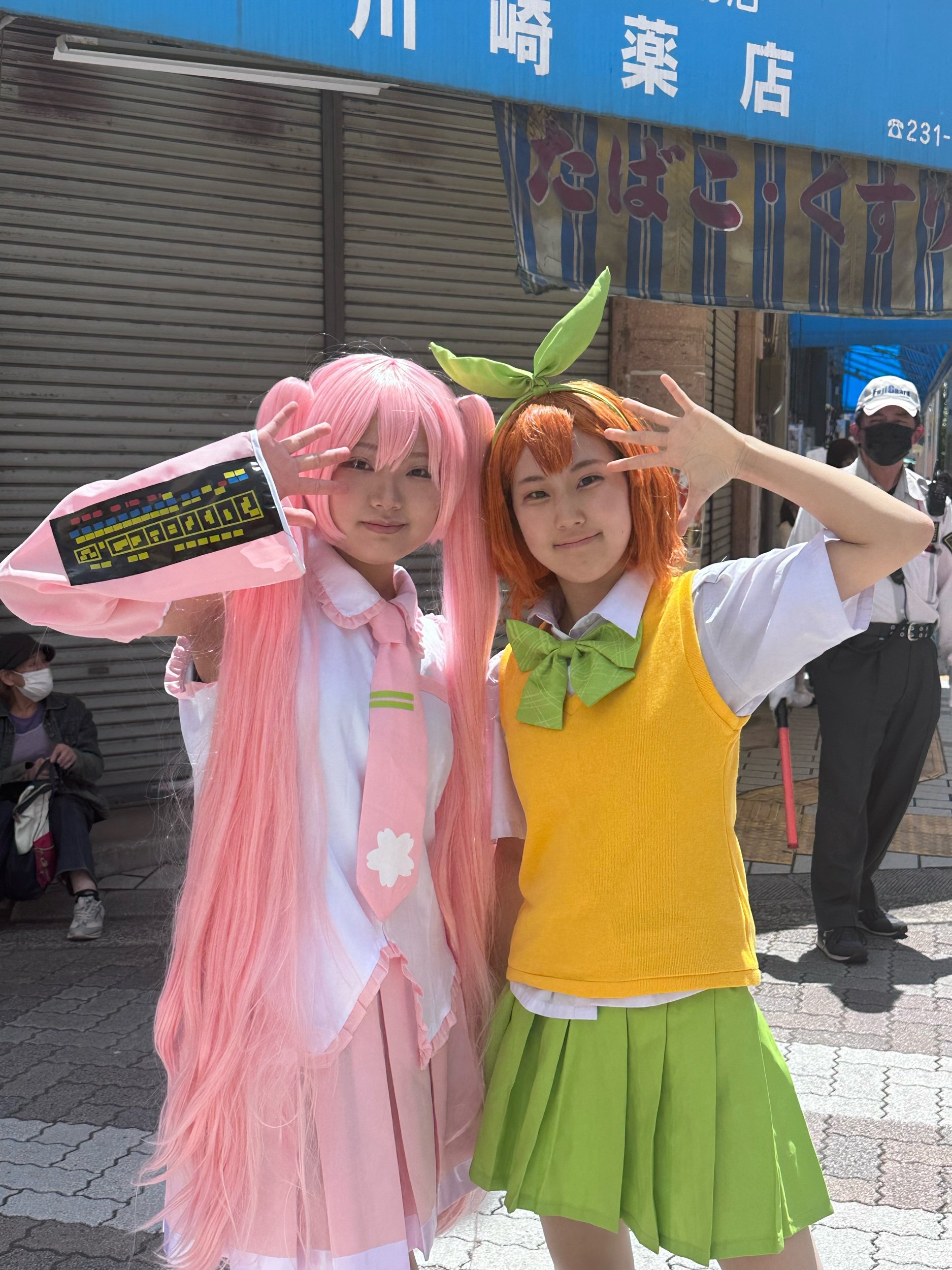Hiroshima, Japan
Hiroshima highlights
Shukkeien Garden
Hiroshima Castle
Cultural Science Museum
Peace Memorial Park
Miyajima
Yokogawa
Why visit Hiroshima?
For a rejuvenated city of peace and hope, with green outdoor spaces, river views, and amazing food.
Getting there and around
We once again used the magical Takuhaiban (luggage forwarding) service to send our backpacks from Kyoto to Hiroshima, and saved ourselves the hassle of taking big bags on trains. Our bags were waiting for us when we arrived in Hiroshima. The overnight service cost £27 for 2 bags.
Our JR passes didn’t cover the fastest Nozomi Shinkansen service but were valid on other connections between Kyoto and Hiroshima. We took the 12.45pm Tokaido-Sanyo rapid express train to Shin Osaka and from there we transferred to our reserved seats on the 1.23pm Sanyo Shinkansen to Hiroshima.
Our hotel in Hiroshima was within walking distance of the central sites and was located next to a tram stop and Hiroshima station. We used our SUICA cards to pay for trams and local trains.
The city was a pleasure to walk around - streets were wide, safe and uncrowded; and many places were connected by tree lined pedestrian routes and green public spaces.
Accommodation
We stayed for 4 nights at the Sotetsu Freesa Hotel in Hiroshima. We had two connecting rooms which cost £130 per night (£65 per room). One had a small double bed and one had twin beds.
The rooms were small, with limited storage and surface space. In the rooms were air conditioning, a small mini fridge, kettle, TV, pyjamas and towels. The compactness and decor reminded us of ferry cabins!
Laundry facilities were available (about £3 to wash and dry per load). There were plenty of restaurants and shops nearby including a Lawson convenience store on the ground floor.
While not luxurious or spacious, this was a basic hotel option that delivered well on a decent night’s sleep for a low cost. It was very well located for both trams and trains.
Our star rating: 3
Our cost rating: 4
Shukkeien Garden
Just a 10 minute walk from our hotel, this delightful garden was constructed in 1620, opened and donated to the public in 1940, and reconstructed and reopened in 1951.
A path winds it way around the pond taking visitors through a series of landscapes in miniature. The focal point of the pond is the bridge, shaped like a rainbow to symbolise peace and hope for the future.
The pond was full of giant carp, and fish food can be purchased for 100 yen (60p). The kids loved feeding the fish.
This website provides a fascinating insight into the garden’s history and importance for the people of Hiroshima.
The following quote taken from that website, from Mr. Okabe Kikuo, town chairman who lived next to the garden as a child, sums up the garden perfectly.
Shukkeien Garden may be the only place left where one can experience the gentle prewar atmosphere of Hiroshima.
Please come visit us here and have a good time. I hope you can feel the strength of Hiroshima, which recovered even after losing everything in the bombing.
Hiroshima Castle
Just a short walk from Shukkeien Garden is Hiroshima Castle. Hiroshima Castle, also known as Carp Castle, was built in 1589 by a powerful feudal lord.
The castle was destroyed by the atomic bomb in 1945 and the ruins can be seen next to the present-day castle keep which was built out of concrete and wood as a reconstruction in 1958.
Much to the kids’ joy, the castle had a moat, and it’s five stories made for an impressive sight. It was interesting to compare the Japanese castle style with that of medieval European castles.
Cultural Science Museum
About 10 minutes walk from Hiroshima Castle in one direction, and the Peace Memorial Park in the other, is the Cultural Science Museum (closed Mondays).
The museum contained 3 floors of interactive exhibits including a lightning generator, voice recorder, racing track with speedometer, kinetic energy powered claw machine, Rube Goldberg ball-coaster, optical illusions and jigsaw puzzles. The miniature city and model railway featuring iconic Shinkansen trains and Hiroshima streetcar trams was our favourite exhibit.
On the day of our visit the museum was almost empty with only a handful of toddlers and no other tourists. We covered the 3 floors in about 90 minutes. Allow longer if visiting the library next door or the planetarium (but be aware that the planetarium has a small entry fee and shows are in Japanese only).
This museum strangely doesn’t feature much in guides to Hiroshima or websites about visiting the city with children. We think that’s a shame as this museum was free to visit, had fun and quirky exhibits, and a wonderful retro feel.
Peace Memorial Park
The Hiroshima Peace Memorial Museum displays photographs and artefacts of survivors and the devastation of the atomic bomb, as well as the history of Hiroshima before and after.
We didn’t visit the museum as we knew it contained graphic and harrowing material. Instead we spoke about the events with the children and visited the park and memorials.
Visiting Hiroshima’s solemn Peace Memorial Park was an intensely moving and poignant experience.
The Atomic Bomb Dome is the remains of the former Prefectural Industrial Promotion Hall. It was one of the only buildings in the hypocentre to survive the blast. It illustrated the devastation and horror of the event.
The Peace Memorial Park monuments - the victims’ cenotaph, the flame of peace, the children’s monument, the statues of prayer - all conveyed the strong message of hope for a world without war, where what happened to Hiroshima would never happen again.
The children’s peace monument was particularly moving. In Japanese culture, if one creates 1000 origami cranes they are granted a wish. Sadako Sasaki was 2 when the bomb hit. She died from leukaemia caused by radiation poisoning 10 years later, despite reaching her goal of folding 1000 cranes.
Inspired by her story, hundreds of thousands of colourful cranes from all over the world hang on threads and surround the monument. Our children added their cranes to the memorial and rang the bell of peace.
Miyajima
For a day trip to Miyajima we took the train from Hiroshima station to Miyajimaguchi station, and then a ferry to the island. The journey took about an hour and was covered by our JR passes.
The island was busy, with lots of tourists. We took some photos of the Itsukushima shrine and famous torri gate which stands in the sea. We didn’t bother queuing up with the crowds for the best photography spot of the gate.
Increasingly we are turned off by the instagram-famous sights. The more people there are, the less attractive it is.
Max took our best photo of the torri gate:
We decided to eat early, so we wouldn’t have to queue for lunch. We had a very good lunch at Tachibana which offered both a kids and a vegetarian menu.
After lunch we walked for about 15 minutes through Momijodani Park, to the ropeway station. This was a pretty uphill walk through woodland, over little bridges, rivers with waterfalls, and ponds with koi carp.
The ropeway cost £12 per adult and £6 per child for a return trip which we thought was relatively expensive. There wasn’t much to do at the top of the Mount Misen but the main attraction was the spectacular views of Hiroshima Bay and the Seto Inland Sea.
After descending back down on the cable cars, we walked along Omotesando Street which was full of fairly standard tourist souvenir shops. Some of the shops were quite tacky.
Yokogawa
Our visit to Hiroshima coincided with the The 27th Yokogawa Kanpai! Kingdom Fushigi City 2023 festival. We came across this festival by chance, when reading a blog post about anime and manga in Hiroshima.
Yokogawa is a small neighbourhood in the suburbs of Hiroshima, just 2 stops on the local San-Sanyo train line from Hiroshima station. The neighbourhood had a laid back arty feel with small shops, an independent cinema, bookshops, street art, and cafes.
Each spring, the main street is closed off to cars for a community festival, with stages for dancers and performers, street food stalls, ice cream and candy floss, tombolas, flea markets, and beer.
Many kids and teenagers like to dress up in cosplay costumes for the festival, and if you ask nicely, they will pose for photographs. Getting into character and striking a pose was a serious business, and the results were impressive!
We were the only foreign tourists at the festival, and we did get quite a few curious looks. Everyone we met was in high spirits and pleased to have us join them. We felt welcomed and were so pleased to be able to experience this fun festival and the hospitality of the people of Yokogawa.
Final thoughts
Hiroshima is a beautiful waterside city with wide tree-lined avenues laid out in a logical grid, excellent public transport, and multiple parks and open spaces.
Many visitors to Hiroshima come for just the day, but we prefer to travel more slowly and get to know a place a little more. We don’t think a day does the city justice, as there is a lot to see and do.
We could easily have spent more time in Hiroshima than the 3 full days we had. With more time we would have visited an art gallery - both the Museum of Art (which was showing a Picasso collection at the time of our visit) and the Museum of Contemporary Art (and the adjacent Hijiyama Park) - looked worth visiting.
More than anywhere else we visited in Japan, we felt that the people we met in Hiroshima welcomed international visitors with kindness and enthusiasm. The city had a global outlook, with international food as well as speciality local dishes, a youthful culture, and a feeling of looking to the future.
Hiroshima felt more spacious and certainly less touristy, than Tokyo and Kyoto. It had the feeling of a proud regional or provincial city.
When we visited the Hiroshima Carps baseball team was playing and team spirit amongst supporters was strong! It would have been fun to see the Carps play, but instead Mal settled for adding one of their hats to his baseball cap collection.































